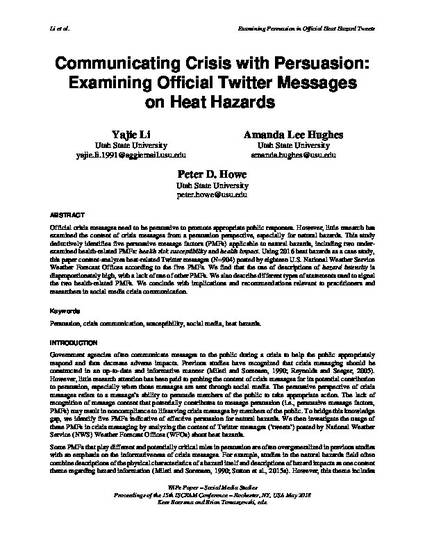
Contribution to Book
Communicating Crisis with Persuasion: Examining Official Twitter Messages on Heat Hazards
Proceedings of the 15th ISCAM Conference, Rochester, NY
(2018)
Abstract
Official crisis messages need to be persuasive to promote appropriate public responses. However, little research has examined the content of crisis messages from a persuasion perspective, especially for natural hazards. This study deductively identifies five persuasive message factors (PMFs) applicable to natural hazards, including two under- examined health-related PMFs: health risk susceptibility and health impact. Using 2016 heat hazards as a case study, this paper content-analyzes heat-related Twitter messages (N=904) posted by eighteen U.S. National Weather Service Weather Forecast Offices according to the five PMFs. We find that the use of descriptions of hazard intensity is disproportionately high, with a lack of use of other PMFs. We also describe different types of statements used to signal the two health-related PMFs. We conclude with implications and recommendations relevant to practitioners and researchers in social media crisis communication.
Disciplines
Publication Date
2018
Editor
Kees Boersma and Brian Tomaszewski
Citation Information
Peter D Howe. "Communicating Crisis with Persuasion: Examining Official Twitter Messages on Heat Hazards" Proceedings of the 15th ISCAM Conference, Rochester, NY (2018) Available at: http://works.bepress.com/peter_howe/79/
